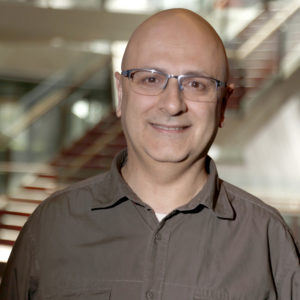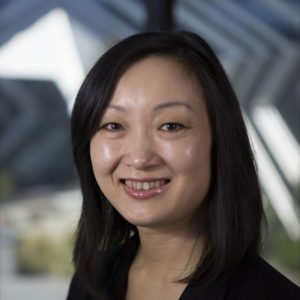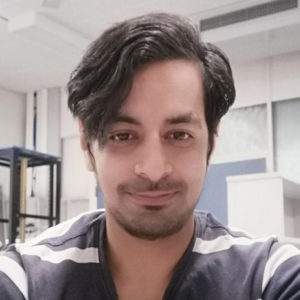T3: OTFS and Delay Doppler Communications
Co-Organizer: Emanuele Viterbo, Monash University, Australia
Co-Organizer: Yi Hong, Monash University, Australia
Co-Organizer: Tharaj Thaj, Monash University, Australia
Abstract: Emerging mass transportation systems – such as self-driving cars, high-speed trains, drones, flying cars, and supersonic flight – will challenge the design of future wireless networks due to high-mobility environments: a large number of high-mobility users require high data rates and low latencies. The physical layer modulation technique is a key design component to meet the system requirements of high mobility.
Currently, orthogonal frequency division multiplexing (OFDM) is the modulation scheme deployed in 4G-5G mobile networks, where the wireless channel typically exhibits time-varying multipath fading. OFDM can only achieve a near-capacity performance over a doubly dispersive channel with a low Doppler effect, but suffers heavy degradations under high Doppler conditions, typically found in high-mobility environments.
Orthogonal time frequency space (OTFS) modulation has been recently proposed by Hadani et al. at WCNC’17, San Francisco. It was shown to provide significant advantages over OFDM in doubly dispersive channels. The OTFS waveform is based on the idea that the mobile wireless channels can be effectively modelled in the delay-Doppler domain. This domain provides a sparse representation closely resembling the physical geometry of the wireless channel.
This tutorial will introduce the general notion of delay-Doppler communications, starting from the fundamental theory of the Zak transform.
Then the transceiver architecture for detection and channel estimation will be presented. Finally, a software defined radio implementation will be shown.
 Emanuele Viterbo
Emanuele Viterbo
Bio: Emanuele Viterbo (F’2011) received his degree (Laurea) in Electrical Engineering in 1989 and his Ph.D. in 1995 in Electrical Engineering, both from the Politecnico di Torino, Torino, Italy. From 1990 to 1992 he was with the European Patent Office, The Hague, The Netherlands, as a patent examiner in the field of dynamic recording and error-control coding. Between 1995 and 1997 he held a post-doctoral position in the Dipartimento di Elettronica of the Politecnico di Torino. In 1997-98 he was a postdoctoral research fellow in the Information Sciences Research Center of AT\&T Research, Florham Park, NJ, USA. He became first Assistant Professor (1998) then Associate Professor (2005) in Dipartimento di Elettronica at Politecnico di Torino. In 2006 he became Full Professor in DEIS at University of Calabria, Italy. From September 2010 he is Professor in the ECSE Department and Associate Dean Graduate Research of the Faculty of Engineering at Monash University, Melbourne, Australia.
Emanuele Viterbo is a 2011 Fellow of the IEEE, an ISI Highly Cited Researcher and Member of the Board of Governors of the IEEE Information Theory Society (2011-2013 and 2014-2018). He served as Associate Editor of IEEE Transactions on Information Theory, European Transactions on Telecommunications and Journal of Communications and Networks. His main research interests are in lattice codes for the Gaussian and fading channels, algebraic coding theory, algebraic space-time coding, digital terrestrial television broadcasting, and digital magnetic recording.
 Yi Hong
Yi Hong
Bio: Yi Hong (S’00–M’05–SM’10) is currently an Associate Professor in the Department of Electrical and Computer Systems Eng. at Monash University, Melbourne, Australia. She obtained her Ph.D. degree in Electrical Engineering and Telecommunications from the University of New South Wales (UNSW), Sydney, and received the NICTA-ACoRN Earlier Career Researcher Award at the Australian Communication Theory Workshop, Adelaide, Australia, 2007. Dr. Hong was an Associate Editor for IEEE Wireless Communication Letters and Transactions on Emerging Telecommunications Technologies (ETT). She was the General Co-Chair of IEEE Information Theory Workshop 2014, Hobart; the Technical Program Committee Chair of Australian Communications Theory Workshop 2011, Melbourne; and the Publicity Chair at the IEEE Information Theory Workshop 2009, Sicily. She was a Technical Program Committee member for many IEEE leading conferences. Her research interests include communication theory, coding and information theory with applications to telecommunication engineering.
 Tharaj Thaj
Tharaj Thaj
Bio: Tharaj Thaj received the B.Tech. degree in electronics and communication engineering from the National Institute of Technology, Calicut, India, in 2012, and the M.Tech. degree in telecommunication systems engineering from the Indian Institute of Technology, Kharagpur, India in 2015. He is currently working toward the Ph.D. degree with the Department of Electrical and Computer Systems Engineering, Monash University, Australia. From 2012 to 2013, he was with Verizon Data Services India, Chennai, as a Software Engineer, focusing on network layer routing algorithms and protocols. From 2015 to 2017, he worked as a Senior Engineer with the Communication, Navigation and Surveillance (CNS) Department of Honeywell Technology Solutions Lab, Bengaluru. His current research interests include physical layer design and implementation of wireless communication systems for next generation wireless networks.
